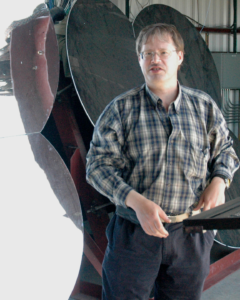“Ideas of social justice, inclusion and equity have always been at the forefront of my mind.
I’m a first-generation in an immigrant family and this has given me a perspective that most other people in physics don’t have. I noticed that there was a trend in who was in the field, with fewer underrepresented and minoritized students and faculty, and this trend had been confirmed by the data. This is something that caught my attention and I got really excited about how we can change this trend to make physics more inclusive. So, when I started my Ph.D. program, I actually switched from nuclear physics to physics education research and started pursuing this line of inquiry. The reason why this work is needed is that physics is incredibly challenged with representation and the experiences of individuals in the community.
I believe my presence adds to the field of physics scholarship. I don’t use deficit language and I don’t use comparisons when talking about marginalized groups. Making these comparisons is inequitable because you’re defining what is ‘normal’ in one group and saying that the other group should be compared to that normal. Instead, we should talk directly to the people being impacted and learn from their experiences to craft policy in order to make a change in the field.
One of the biggest findings that we’ve had is that inclusivity in physics is much more predictive of people staying in the field than exclusivity is predictive of people leaving. What that tells us is that inclusion is a more powerful experience than discrimination. When we think about the climate of physics, a neutral climate is not enough. We have to create an actively inclusive climate if we want to make a change in this field and make sure that everybody is fully included.
I would love to see a physics community that anybody can come to and participate in. I want them to be able to bring their background, their unique perspective and their full self to physics.”
– Ramón Barthelemy, assistant professor, Department of Physics & Astronomy
This story originally appeared in @TheU.






 It has been a while since we published our last issue of the Catalyst. Many things have changed since then–we have new colleagues, lost some of our friends, weathered the complexity of the pandemic, and continued to build the department. What has remained the same is the underlying passion, drive, and excellence that I observe day to day in our faculty, staff, graduate and undergraduate students, and postdoctoral researchers. I see this while advising and mentoring my own research team and working with my colleagues and our staff to address challenges.
It has been a while since we published our last issue of the Catalyst. Many things have changed since then–we have new colleagues, lost some of our friends, weathered the complexity of the pandemic, and continued to build the department. What has remained the same is the underlying passion, drive, and excellence that I observe day to day in our faculty, staff, graduate and undergraduate students, and postdoctoral researchers. I see this while advising and mentoring my own research team and working with my colleagues and our staff to address challenges.